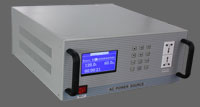Category

Which transformer is better, 50Hz vs 60Hz?
These things are very interesting for we Engineers to consider and discuss, even if of little practical regard! It is feasible someone in the EU or India may buy a superbly designed, manufactured transformer from the US and this type of information may be of significance for its application. The losses are small in the example given, although they could be significant as the KVA rating increases, and those additional losses, or indeed that additional KVA output, may play an important role. Other than that, it is great for Engineers to think about the effects of system differences on the operation of particular equipment.

Frankly we are stuck to our system frequency, say 50Hz in India and Europe vs 60Hz in USA and Canada, We have no choice. However, theoretically a transformer at 60Hz could deliver more power if 20% higher Voltage (as compared to 50Hz) is applied. This would drive the transformer core magnetic loading to the same level as 50Hz at lower voltage; however the eddy and hysteresis losses would be higher, as such I would suggest a 5-10% lower current loading.
Considering the apparent power...isn't it true that if you connect a 50 Hz transformer to a 60 Hz power supply the EMF induced in the second winding will be more than it will be in the case of a 50 Hz supply for the same turns ratio / tapings... now the impedance will be higher but not at the same proportion as increase in EMF because EMF is directly proportional to Hz while increase in frequency will increase inductance but the resistance will remain the same and hence overall impedance will not as high as proportionately to the 10 Hz ... current drawn will depend on load but with higher imp it will on make transformer hotter while the EMF will be higher... but the overall capability of delivering apparent power will increase ... there can be loads demanding higher reactive power.
All electric machines (transformer or motor) can work at 50Hz or 60Hz but voltage applied bust be in the same ratio of 50/60. Of course power capacity is in the same ratio. In terms of pure efficiency, practical is the same, because is proportional to square of current (P=RxI^2), that is the same (copper loss), but at 50 Hz is a little better; Iron loss are proportional to frequency. Power factor don't change too much, but best at 50Hz.
At 50 Hz and 400 V the output would of course be slightly more due to the complexity of mathematical Electrical Ohm's Law, as well as eddy current losses. The application of design, use, and current available power supply is more correctly the point of the question, less than the actual question. For instance Available Power in the US is based on a 60 Hz model while most European countries and other countries within the Asian Basin (minus Japan) are based on a 50 Hz model of application.

Frankly we are stuck to our system frequency, say 50Hz in India and Europe vs 60Hz in USA and Canada, We have no choice. However, theoretically a transformer at 60Hz could deliver more power if 20% higher Voltage (as compared to 50Hz) is applied. This would drive the transformer core magnetic loading to the same level as 50Hz at lower voltage; however the eddy and hysteresis losses would be higher, as such I would suggest a 5-10% lower current loading.
Considering the apparent power...isn't it true that if you connect a 50 Hz transformer to a 60 Hz power supply the EMF induced in the second winding will be more than it will be in the case of a 50 Hz supply for the same turns ratio / tapings... now the impedance will be higher but not at the same proportion as increase in EMF because EMF is directly proportional to Hz while increase in frequency will increase inductance but the resistance will remain the same and hence overall impedance will not as high as proportionately to the 10 Hz ... current drawn will depend on load but with higher imp it will on make transformer hotter while the EMF will be higher... but the overall capability of delivering apparent power will increase ... there can be loads demanding higher reactive power.
All electric machines (transformer or motor) can work at 50Hz or 60Hz but voltage applied bust be in the same ratio of 50/60. Of course power capacity is in the same ratio. In terms of pure efficiency, practical is the same, because is proportional to square of current (P=RxI^2), that is the same (copper loss), but at 50 Hz is a little better; Iron loss are proportional to frequency. Power factor don't change too much, but best at 50Hz.
At 50 Hz and 400 V the output would of course be slightly more due to the complexity of mathematical Electrical Ohm's Law, as well as eddy current losses. The application of design, use, and current available power supply is more correctly the point of the question, less than the actual question. For instance Available Power in the US is based on a 60 Hz model while most European countries and other countries within the Asian Basin (minus Japan) are based on a 50 Hz model of application.
Post a Comment:
You may also like:

